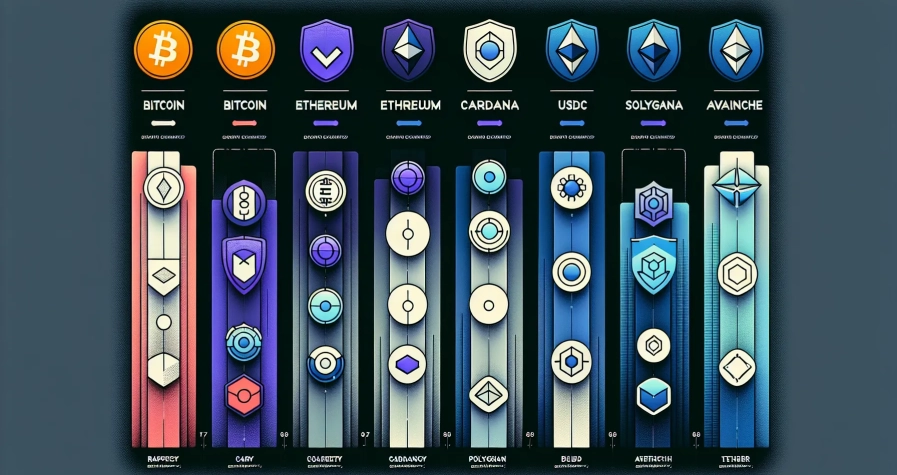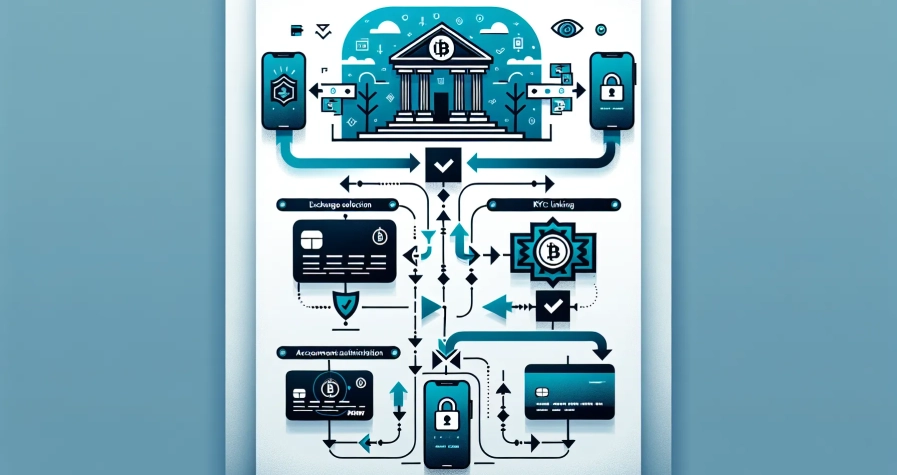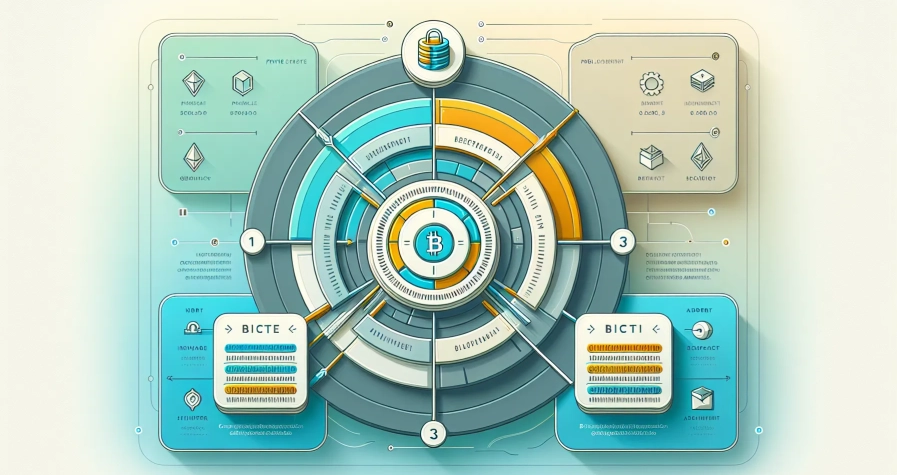Moving Bitcoin between wallets might seem daunting if you’re new to cryptocurrency, but it’s actually a straightforward process once you understand the basics. Whether you’re transferring funds to a friend, making a purchase, or simply moving your Bitcoin to a more secure wallet, the transaction process follows the same fundamental steps.
The key to successful Bitcoin transfers lies in understanding wallet addresses, transaction fees, and network confirmations. You’ll need the recipient’s correct wallet address – a unique string of letters and numbers that acts like a digital bank account. Getting this wrong could mean losing your Bitcoin forever, so accuracy is crucial.
With the right knowledge and careful attention to detail, you can confidently send Bitcoin anywhere in the world within minutes. This guide will walk you through each step of the process, ensuring your transactions are both secure and successful.
Understanding Bitcoin Wallet Addresses
Bitcoin wallet addresses function as unique identifiers that enable you to receive cryptocurrency transactions. These alphanumeric strings serve as your digital postal code in the Bitcoin network.
Types of Bitcoin Addresses
Bitcoin addresses come in three primary formats, each offering distinct characteristics and compatibility levels. Legacy addresses begin with the number “1” and represent the original Bitcoin address format introduced in 2009. These P2PKH (Pay-to-Public-Key-Hash) addresses contain 26-35 characters and maintain compatibility with all Bitcoin wallets and exchanges.
Segwit addresses start with “3” and provide enhanced transaction efficiency through reduced fees. These P2SH (Pay-to-Script-Hash) addresses support both legacy and modern wallet formats whilst offering backward compatibility with older Bitcoin infrastructure.
Native Segwit addresses commence with “bc1” and deliver the lowest transaction fees available on the Bitcoin network. These Bech32 addresses contain only lowercase letters and numbers, making them less prone to typing errors during manual entry.
| Address Type | Prefix | Character Count | Fee Level | Compatibility |
|---|---|---|---|---|
| Legacy | 1 | 26-35 | Higher | Universal |
| Segwit | 3 | 26-35 | Medium | Most wallets |
| Native Segwit | bc1 | 42 | Lowest | Modern wallets |
Verifying Recipient Address Accuracy
Double-checking recipient addresses prevents irreversible Bitcoin losses through incorrect transactions. Copy the recipient’s address directly from their wallet application rather than typing it manually to eliminate human error. Paste the address into your sending wallet and verify the first 6-8 characters match the original address exactly.
Cross-reference the last 4-6 characters of the pasted address with the recipient’s provided address before confirming the transaction. Many Bitcoin wallets display QR codes that encode the recipient’s address, allowing you to scan rather than type the destination. Screenshots of addresses introduce potential security risks, so request the address through secure messaging channels or direct wallet sharing features.
Some wallets include address validation features that highlight incompatible or incorrectly formatted addresses before transaction submission. Test transactions involving small Bitcoin amounts (0.0001 BTC) verify address accuracy before sending larger sums to new recipients.
Preparing Your Bitcoin Transaction
Proper preparation ensures your Bitcoin transfer completes successfully without delays or errors. You must verify sufficient funds and understand fee structures before initiating any transaction.
Checking Your Bitcoin Balance
Your wallet interface displays your current Bitcoin balance in BTC or equivalent currency values. Check this balance carefully to confirm you possess adequate funds for both the intended transfer amount and associated network fees.
Most wallets show available balance prominently on the main screen or dashboard. Access your wallet by logging into your chosen application or exchange platform. Verify the displayed amount covers your planned transaction plus estimated fees before proceeding to the send function.
Some wallets distinguish between confirmed and unconfirmed balances. Use only confirmed balance figures for accurate calculations, as unconfirmed transactions may not be available for immediate spending.
Understanding Transaction Fees
Bitcoin transactions require network fees that incentivise miners to validate and process your transfer. These fees operate as payments to miners who confirm transactions on the blockchain network.
Fee calculations typically use satoshis per byte measurements, where higher fees result in faster transaction processing times. Current network conditions influence fee requirements, with congested periods demanding increased payments for timely confirmations.
Most modern wallets automatically calculate recommended fees based on real-time network analysis. These suggestions help you balance cost efficiency with processing speed according to your specific timing requirements.
Choosing the Right Fee Level
Fee selection directly impacts transaction confirmation speed and overall cost. Standard options include economy settings with lower fees but slower processing, balanced levels offering moderate costs and timing, and priority fees ensuring rapid confirmations.
Economy fees suit non-urgent transfers where waiting several hours for confirmation poses no inconvenience. Priority fees benefit time-sensitive transactions requiring confirmations within 10-30 minutes.
Advanced users can set custom fee amounts for precise control over costs and timing. However, extremely low custom fees risk transaction delays or network rejection, while excessively high fees waste unnecessary funds.
Consider network congestion patterns when selecting fees, as weekend periods often feature lower activity and reduced fee requirements compared to weekday business hours.
Step-by-Step Guide to Sending Bitcoin
Executing your first Bitcoin transaction involves five straightforward steps that ensure secure and accurate transfers. These detailed instructions guide you through each phase of the sending process.
Accessing Your Wallet’s Send Function
Launch your Bitcoin wallet application and authenticate using your PIN code, password, or biometric verification. Most wallet interfaces display a clearly labelled “Send” button prominently on the main dashboard or within the transaction menu. Popular wallets like Electrum, Bitcoin Core, and mobile applications such as BlueWallet position this function in the primary navigation area for quick access.
Some wallets organise the send function under transaction menus or use alternative labels such as “Transfer” or “Pay”. Advanced wallet applications may require you to select the specific Bitcoin address from which you want to send funds if you maintain multiple addresses within the same wallet.
Entering the Recipient’s Address
Copy the recipient’s Bitcoin wallet address from their wallet application or communication platform and paste it directly into the recipient field. This method eliminates typing errors that commonly occur when manually entering the 26-35 character address string.
Scan QR codes using your wallet’s built-in camera function when the recipient provides one, as this automated method significantly reduces address input errors. Most modern wallets generate QR codes automatically when sharing receive addresses.
Verify the first 6-8 characters and final 4-6 characters of the pasted address against the original to confirm accuracy. Bitcoin transactions remain irreversible once confirmed on the blockchain, making address verification your primary defence against fund loss.
Specifying the Amount to Send
Enter the Bitcoin amount using either BTC denomination or your wallet’s fiat currency conversion feature. Most wallets display both values simultaneously, allowing you to confirm the exact monetary equivalent of your transfer.
Calculate your available sending balance by subtracting estimated network fees from your confirmed Bitcoin balance. Confirmed balances exclude pending transactions that haven’t received blockchain confirmations yet.
Consider minimum and maximum sending limits imposed by certain wallet types or exchange-integrated wallets. Hardware wallets typically don’t impose sending limits, whilst some custodial services may restrict transaction amounts based on verification levels.
Reviewing Transaction Details
Examine the transaction summary displaying the recipient address, sending amount, and estimated network fee before finalising the transfer. This final review stage prevents costly mistakes and allows fee adjustments if your wallet supports custom fee settings.
Verify that your wallet displays the correct fee tier—economy, standard, or priority—based on your timing requirements. Network congestion affects confirmation speeds, with economy fees potentially taking 24-72 hours during peak periods whilst priority fees typically confirm within 10-30 minutes.
Check that the total transaction cost (amount plus fees) doesn’t exceed your available confirmed balance. Some wallets automatically calculate maximum sendable amounts that account for network fees, preventing insufficient balance errors during transaction broadcast.
Different Wallet Types and Sending Methods
Your choice of wallet significantly impacts the Bitcoin sending process and security level. Each wallet type offers distinct advantages and follows specific procedures for completing transactions.
Mobile Wallet Transactions
Mobile wallets such as Trust Wallet or BlueWallet streamline Bitcoin transfers through intuitive app interfaces. You access the sending function by logging into your wallet application and selecting the “Send” option from the main menu.
The transaction process begins when you enter or scan the recipient’s Bitcoin address using the built-in QR code scanner. You specify the amount you want to send and adjust network fees if your wallet provides this option. Mobile wallets typically display fee recommendations ranging from economy to priority levels based on current network conditions.
Key Mobile Wallet Features:
- QR code scanning for accurate address entry
- Integrated fiat-to-crypto purchase options
- Push notifications for transaction confirmations
- Biometric authentication support
- Real-time fee estimation tools
Mobile wallets offer exceptional convenience for everyday transactions but depend on your device’s security measures. You enhance protection by enabling two-factor authentication and keeping your mobile operating system updated.
Desktop Wallet Transfers
Desktop wallets like Exodus or Sparrow provide comprehensive software interfaces with advanced transaction controls. You initiate transfers by accessing the wallet application on your computer and navigating to the “Send” function within the main dashboard.
The sending process mirrors mobile wallets but offers expanded customisation options. You enter the recipient’s Bitcoin address manually or through clipboard integration and specify the exact amount in BTC or your preferred fiat currency. Desktop wallets frequently provide detailed fee adjustment settings allowing you to optimise transaction costs based on urgency.
Desktop Wallet Advantages:
- Enhanced transaction history tracking
- Advanced fee customisation controls
- Multi-currency portfolio management
- Backup and recovery tools
- Integration with hardware wallets
Desktop wallets maintain internet connectivity which provides real-time network updates but requires consistent software updates and robust security protocols. You protect your funds by using reputable antivirus software and avoiding suspicious websites or downloads.
Hardware Wallet Sending Process
Hardware wallets such as BitBox02 or Ledger Nano isolate private keys in offline environments for maximum security. You connect the physical device to your computer or smartphone to initiate Bitcoin transactions through compatible wallet applications.
The transaction signing occurs entirely on the hardware device after you verify the recipient address and amount on the device’s screen. You confirm transaction details using physical buttons on the hardware wallet before the signed transaction broadcasts to the Bitcoin network through your connected device.
Hardware Wallet Security Benefits:
- Private keys never leave the device
- Offline transaction signing
- Physical confirmation requirements
- Protection against malware attacks
- Recovery seed backup systems
| Wallet Type | Security Level | Convenience | Fee Control | Best For |
|---|---|---|---|---|
| Mobile | Medium | High | Basic | Daily transactions |
| Desktop | Medium-High | Medium | Advanced | Regular trading |
| Hardware | Highest | Low | Advanced | Long-term storage |
Hardware wallets require additional setup time and physical device management but provide unmatched security for significant Bitcoin holdings. You maintain device firmware updates and store recovery phrases in secure locations separate from the hardware wallet itself.
Transaction Confirmation and Tracking
Once you’ve completed your Bitcoin transaction your transfer enters the network’s verification process. Mining nodes validate and confirm your transaction by including it in blockchain blocks.
Understanding Blockchain Confirmations
Bitcoin confirmations represent the number of blocks added to the blockchain after your transaction gets included in a block. Each confirmation increases your transaction’s security and irreversibility within the network.
Network Requirements and Security Levels:
- 1 confirmation provides basic security for small transactions under £100
- 3 confirmations offer moderate security for medium transactions between £100-£1000
- 6 confirmations deliver maximum security for large transactions over £1000
Mining pools typically process transactions every 10 minutes on average though network congestion can extend this timeframe. High-priority transactions with premium fees often receive faster inclusion in the next available block.
Double-spending prevention occurs automatically as confirmations accumulate since reversing transactions becomes exponentially more difficult. Exchanges and merchants commonly require 3-6 confirmations before crediting received Bitcoin to recipient accounts.
Monitoring Your Transaction Status
Blockchain explorers provide real-time tracking capabilities for monitoring your Bitcoin transfer progress. These public databases display comprehensive transaction details including confirmation status and network fees.
Popular Blockchain Explorer Options:
- Blockchain.com offers user-friendly interfaces with mobile applications
- Mempool.space provides detailed fee analysis and network congestion data
- Blockchair.com includes advanced search filters and transaction analytics
- BTC.com features comprehensive mining statistics and block information
Enter your transaction ID (TXID) or wallet address into any explorer’s search function to access detailed information. Transaction records display sender addresses recipient addresses transfer amounts timestamps and current confirmation counts.
Your wallet application automatically tracks outgoing transactions in the history section though these internal records provide limited technical details. Most wallets display pending unconfirmed and completed transaction statuses with estimated completion times based on current network conditions.
Transaction broadcasting typically occurs within seconds while first confirmations arrive within 10-60 minutes depending on network activity. Monitor your transfer status regularly during the confirmation process to ensure successful completion.
Common Mistakes to Avoid
Bitcoin transfers can’t be reversed once confirmed, making error prevention essential for protecting your funds. These critical mistakes cost users millions of pounds annually through irreversible losses and unnecessary fees.
Double-Checking Address Accuracy
Sending Bitcoin to an incorrect address results in permanent fund loss since blockchain transactions can’t be undone. Copy wallet addresses directly from recipient applications rather than typing them manually to eliminate human error.
Verification techniques include:
- Confirming the first 6-8 characters match exactly after pasting the address
- Scanning QR codes when available to bypass manual entry completely
- Using your wallet’s address book feature to store verified recipient addresses
- Sending test transactions of £5-10 to new addresses before transferring larger amounts
Address formats vary between wallet types, with Legacy addresses starting with “1”, Segwit addresses beginning with “3”, and Native Segwit addresses starting with “bc1”. Your wallet automatically detects compatible formats, but double-checking prevents compatibility issues that could delay transactions.
Never send Bitcoin to addresses from other cryptocurrencies like Ethereum or Litecoin. These cross-network transfers result in complete fund loss since different blockchain protocols can’t process incompatible address formats.
Avoiding Overpaying on Fees
Network fees fluctuate based on blockchain congestion, with users often paying 300-500% more than necessary during peak periods. Monitor current fee rates using tools like Mempool.space before initiating transfers to avoid overpayment.
Fee optimisation strategies include:
- Selecting economy fee settings for non-urgent transfers (30-60 minutes confirmation)
- Using standard fees during normal network conditions (10-30 minutes confirmation)
- Reserving priority fees exclusively for time-sensitive transactions requiring immediate confirmation
- Setting custom fee rates between 10-50 satoshis per byte based on current network conditions
Timing your transactions during off-peak hours (weekends and late evenings GMT) typically reduces fees by 40-60%. Batch multiple small transfers into single larger transactions when possible to maximise fee efficiency.
Insufficient fee settings cause transactions to remain unconfirmed for hours or days. Most wallets display estimated confirmation times alongside fee options, allowing you to balance cost against urgency requirements effectively.
Security Best Practices
Securing your Bitcoin transfers requires implementing multiple layers of protection to safeguard your digital assets. These essential practices protect against theft, hacking attempts, and accidental losses during transactions.
Protecting Your Private Keys
Your private key serves as the master access to your Bitcoin wallet and requires absolute protection. Store your seed phrase on physical materials like paper or metal backup plates in secure, fireproof locations away from digital storage systems.
Physical storage methods include:
- Paper backups written in permanent ink and stored in waterproof containers
- Metal backup plates that resist fire, water, and corrosion damage
- Safety deposit boxes in banks or secure facilities for long-term storage
- Multiple secure locations to prevent single-point-of-failure risks
Digital storage creates vulnerabilities that hackers can exploit through malware, phishing, or cloud service breaches. Avoid storing private keys on computers, phones, email accounts, or cloud services like Google Drive or Dropbox.
Never share your private keys or seed phrases with anyone, including customer support representatives or technical assistance providers. Legitimate Bitcoin services never request private key information, and sharing these credentials results in immediate wallet compromise.
Verify your backup accuracy by testing recovery procedures with small amounts before storing larger Bitcoin quantities. Document storage locations securely and inform trusted family members about backup locations for inheritance purposes.
Using Two-Factor Authentication
Two-factor authentication adds a critical security layer beyond password protection for wallet access and transaction approvals. Configure 2FA on all Bitcoin-related accounts including wallets, exchanges, and trading platforms.
Authenticator applications provide the strongest 2FA security through time-based one-time passwords:
- Google Authenticator offers offline code generation and device synchronisation
- Authy provides cloud backup and multi-device support features
- Microsoft Authenticator integrates with Windows systems and business accounts
Hardware security tokens deliver maximum protection through physical verification devices:
- Protectimus Slim NFC generates offline codes without internet connectivity
- YubiKey devices provide FIDO2 authentication for compatible wallets
- Hardware tokens eliminate mobile device dependencies and SIM swap risks
Avoid SMS-based 2FA authentication due to SIM swapping vulnerabilities where attackers transfer your phone number to their devices. Mobile carriers can’t prevent determined attackers from social engineering account access.
Configure backup authentication methods including recovery codes stored separately from your primary 2FA device. Update authentication settings immediately if you lose access to 2FA devices or suspect account compromise.
Enable transaction confirmation requirements through 2FA for additional transfer security. This forces verification for each outgoing Bitcoin transaction, preventing unauthorised transfers even if attackers access your wallet login credentials.
Conclusion
Sending Bitcoin to another wallet becomes second nature once you’ve mastered the fundamentals. You’ll find that choosing the right address type understanding fee structures and following security protocols make all the difference between successful transfers and costly mistakes.
Your wallet choice significantly impacts both security and convenience so select one that matches your technical expertise and transaction frequency. Whether you’re using a mobile app for quick transfers or a hardware wallet for maximum security the core process remains consistent across platforms.
Remember that Bitcoin transactions are irreversible so always verify addresses carefully and consider test transactions for large amounts. With proper preparation attention to detail and adherence to best practices you can confidently transfer Bitcoin anywhere in the world whilst maintaining complete control over your digital assets.
Frequently Asked Questions
What is a Bitcoin wallet address and how does it work?
A Bitcoin wallet address is a unique identifier that functions like a digital postal code for receiving Bitcoin transactions. It’s a string of alphanumeric characters that allows others to send Bitcoin directly to your wallet. There are three main types: Legacy addresses (starting with “1”), Segwit addresses (starting with “3”), and Native Segwit addresses (starting with “bc1”), each offering different fee structures and compatibility levels.
How long does a Bitcoin transaction take to confirm?
Bitcoin transactions typically take around 10 minutes per confirmation, though this can vary based on network congestion and the transaction fee paid. For small transactions under £100, one confirmation is usually sufficient. Medium transactions (£100-£1000) require 3 confirmations, whilst large transactions over £1000 should wait for 6 confirmations for maximum security.
What are Bitcoin transaction fees and how are they calculated?
Bitcoin transaction fees are payments made to miners for validating and processing your transfer. Fees are calculated based on satoshis per byte, with rates varying depending on network congestion and urgency. Economy fees are cheapest for non-urgent transfers, whilst priority fees ensure faster processing during busy periods. Most wallets automatically suggest appropriate fee levels.
Can I cancel or reverse a Bitcoin transaction after sending it?
No, Bitcoin transactions are irreversible once confirmed on the blockchain. This is why it’s crucial to double-check the recipient’s address before sending. To prevent mistakes, always copy addresses directly from wallet applications, verify the first 6-8 characters, use QR codes when possible, and consider sending a small test amount before transferring larger sums.
Which type of Bitcoin wallet is best for sending transactions?
The best wallet depends on your needs. Mobile wallets offer convenience with QR code scanning and user-friendly interfaces. Desktop wallets provide advanced fee controls and detailed transaction management. Hardware wallets offer the highest security by keeping private keys offline, requiring physical confirmation for transactions. Consider your security requirements and technical expertise when choosing.
How can I track my Bitcoin transaction status?
You can track Bitcoin transactions using blockchain explorers such as Blockchain.com, Mempool.space, Blockchair.com, or BTC.com. Simply enter your transaction ID (TXID) or wallet address to view real-time status updates, confirmation count, and detailed transaction information. Most wallet applications also provide basic tracking for outgoing transactions, though with limited technical details compared to blockchain explorers.
What should I do if I accidentally send Bitcoin to the wrong address?
Unfortunately, Bitcoin transactions to incorrect addresses cannot be reversed or cancelled. The funds are permanently lost unless you control the receiving address. To prevent this, always copy addresses directly from the recipient’s wallet, verify the first 6-8 characters match, use QR codes when available, and send a small test transaction before transferring larger amounts.
How do I avoid paying excessive transaction fees?
Monitor current network fee rates and select appropriate settings based on urgency. Use economy fees for non-urgent transfers and avoid peak congestion periods. Consider batching multiple small transfers into single larger transactions for better efficiency. Most modern wallets provide real-time fee estimation to help you choose the optimal rate without overpaying for network processing.









